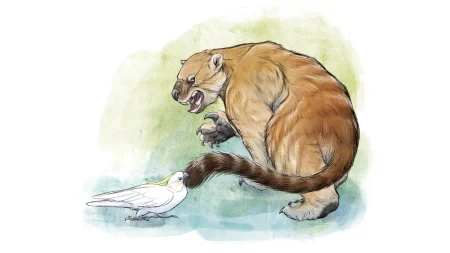Mystery of Fuegian ‘Dogs’ Reveals Ancient Human-Fox Partnership
In the remote archipelago of Tierra del Fuego at South America’s southernmost tip, a remarkable relationship between humans and canids has been uncovered that challenges our understanding of animal domestication. What European colonizers described as “Fuegian dogs” living alongside Indigenous peoples were likely not dogs at all, but semi-tame culpeos – foxlike animals native to South America – according to research published in the Journal of Zoology.
For thousands of years, the Yámana and Selk’nam people of Tierra del Fuego maintained a unique partnership with these animals. Historical accounts from European visitors in the 18th century described creatures that were terrierlike, typically grayish-tan with bushy tails, but with distinctly foxlike features: sharp-nosed and lacking the spotted or patched coats common in domesticated dogs. Their temperament was notably different from typical domesticated canines – they were described as ill-mannered yet willing to rest alongside humans, and those shipped to England couldn’t be prevented from attacking poultry and piglets, suggesting they maintained much of their wild nature.
Wildlife ecologist William Franklin of Iowa State University became fascinated by these enigmatic canines while studying how wild llama ancestors reached Tierra del Fuego. His comprehensive investigation included historical artwork, written accounts, archaeological findings, genetic data, and Indigenous descriptions of the animals. The evidence points to an extraordinary conclusion: these weren’t dogs but culpeos (Lycalopex culpaeus), a South American fox species that developed a mutually beneficial relationship with humans. This theory gained strong support from a 2013 genetic study on a museum specimen labeled as a Fuegian dog, which matched the DNA profile of culpeos.
Archaeological evidence further supports this conclusion. Erica Hill, an archaeologist at the University of Alaska Southeast, notes there is no archaeological evidence of dogs this far south in the Americas prior to European colonization. Franklin adds that the southernmost confirmed dog remains, dating back 870 years, were found 1,000 kilometers north of Tierra del Fuego. The Fuegian foxes weren’t pets in the modern sense but working partners. Multiple accounts describe them capturing otters and helping with fishing by corralling schools of fish so humans could net them more easily – a testament to the intelligent cooperation between species.
The cultural significance of these foxes to the Indigenous peoples cannot be overstated. The Yámana language contains approximately 160 phrases related to these animals, highlighting their integration into the society’s cultural fabric. This partnership may have been crucial for human survival in the harsh environment of Tierra del Fuego, similar to how sled dog relationships have been vital in Arctic regions. Interestingly, as European colonization progressed, later depictions of Fuegian “dogs” appeared increasingly doglike, suggesting that European dogs gradually replaced the native foxes as Indigenous communities were decimated.
This discovery points to a broader pattern in human history – the development of relationships with local canid species when wolves weren’t available for domestication. Similar human-fox partnerships have been documented elsewhere in the world, including evidence of red foxes accompanying humans in Europe for over 40,000 years and fox burials in Israel dating back 16,500 years. As Fabián Jaksic, an ecologist at the Pontifical Catholic University of Chile, suggests, the Fuegian case may represent both partially tamed culpeos brought to the island by Indigenous people and true dogs associated with inhabitants of the southern archipelago. These findings reveal the remarkable adaptability of both humans and canids, and their capacity to form cooperative relationships across diverse environments and cultures throughout history.















